If you’re planning a trip to Tasmania, chances are Cradle Mountain is on your radar. And it should be. It’s one of the most extraordinary parts of the state and Australia.
The distinctive mountain stretching behind Dove Lake is a scene that entices people from around the world to this little spot in the heart of Tasmania. It’s part of the UNESCO-listed Tasmanian Wilderness World Heritage Area, which when added in 1982 satisfied more criteria for selection (seven out of 10) than any other site.
From this northern gateway into the Cradle Mountain-Lake St Clair National Park, you can explore alpine landscapes, cool temperate rainforest and untouched wilderness.
It’s best experienced over a few days so you can take in several walks and some of the other activities. But if you only have one day to spare, you will still be able to see why this place is so special.
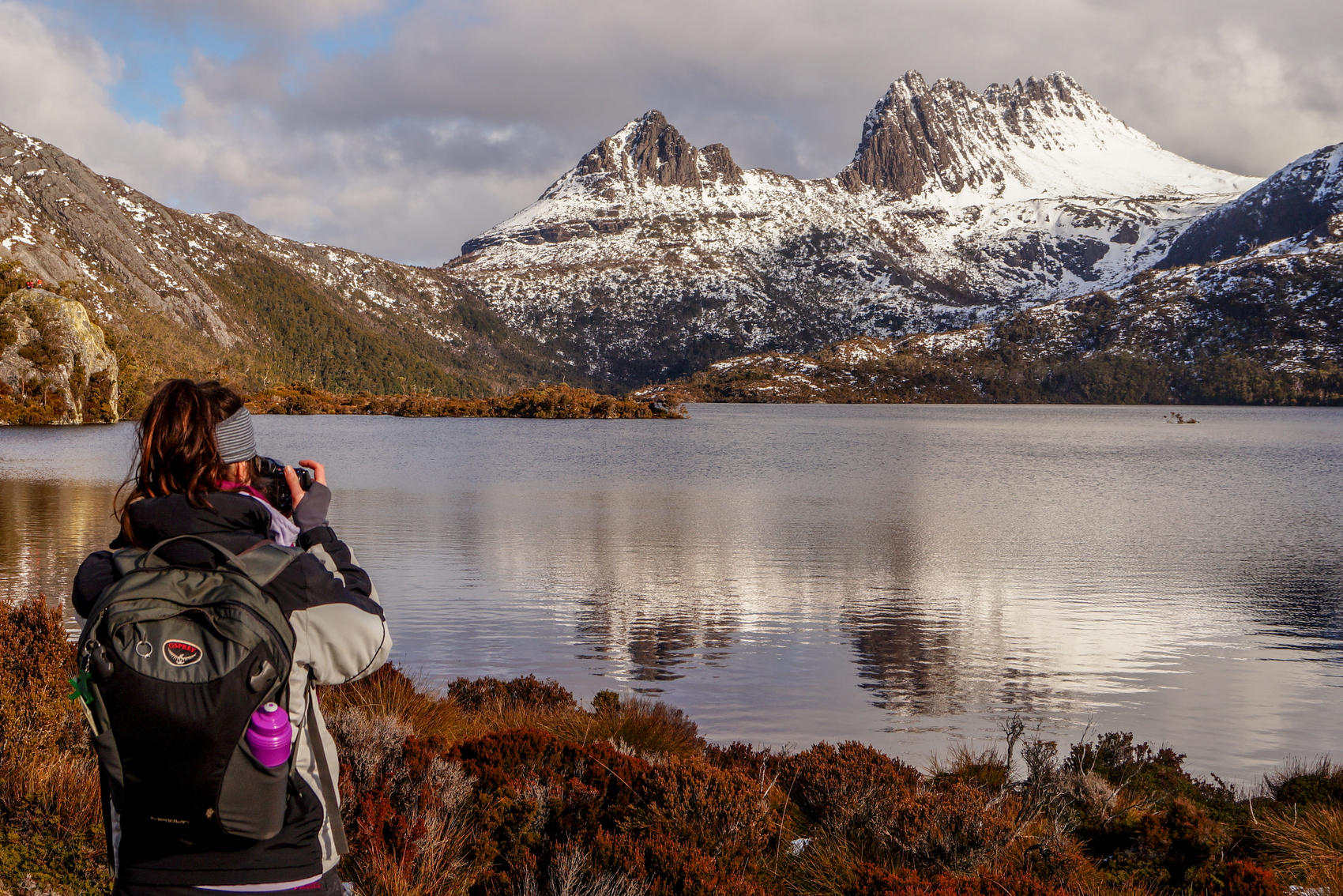
The Basics
Getting here: Cradle Mountain-Lake St Clair National Park is 1 hour 30 minutes from Devonport or Burnie and 2 hours 30 minutes from Launceston. The road from the east can be particularly windy between Sheffield and Cradle Mountain so you may want to allow extra time. There are limited public transport services.
Getting to Dove Lake: Dove Lake and Cradle Mountain itself are about seven kilometres inside the national park boundary. Private vehicle access is restricted, but shuttle bus services run for most of the day stopping at the visitor centre (about 2km outside the park), interpretation centre (at the park boundary), Snake Hill (about 3.5km inside the park), Ronny Creek (5.5km) and Dove Lake.
Fees: To enter the national park you’ll need a Parks Pass. These can be purchased at the visitor centre and will include use of the shuttle service. There are options available if you plan to visit more national parks in Tasmania.
Weather: The weather at Cradle Mountain is very changeable year round and you need to be prepared for all conditions, particularly if you plan on hiking.
- For more information visit the Tasmania Parks and Wildlife website.
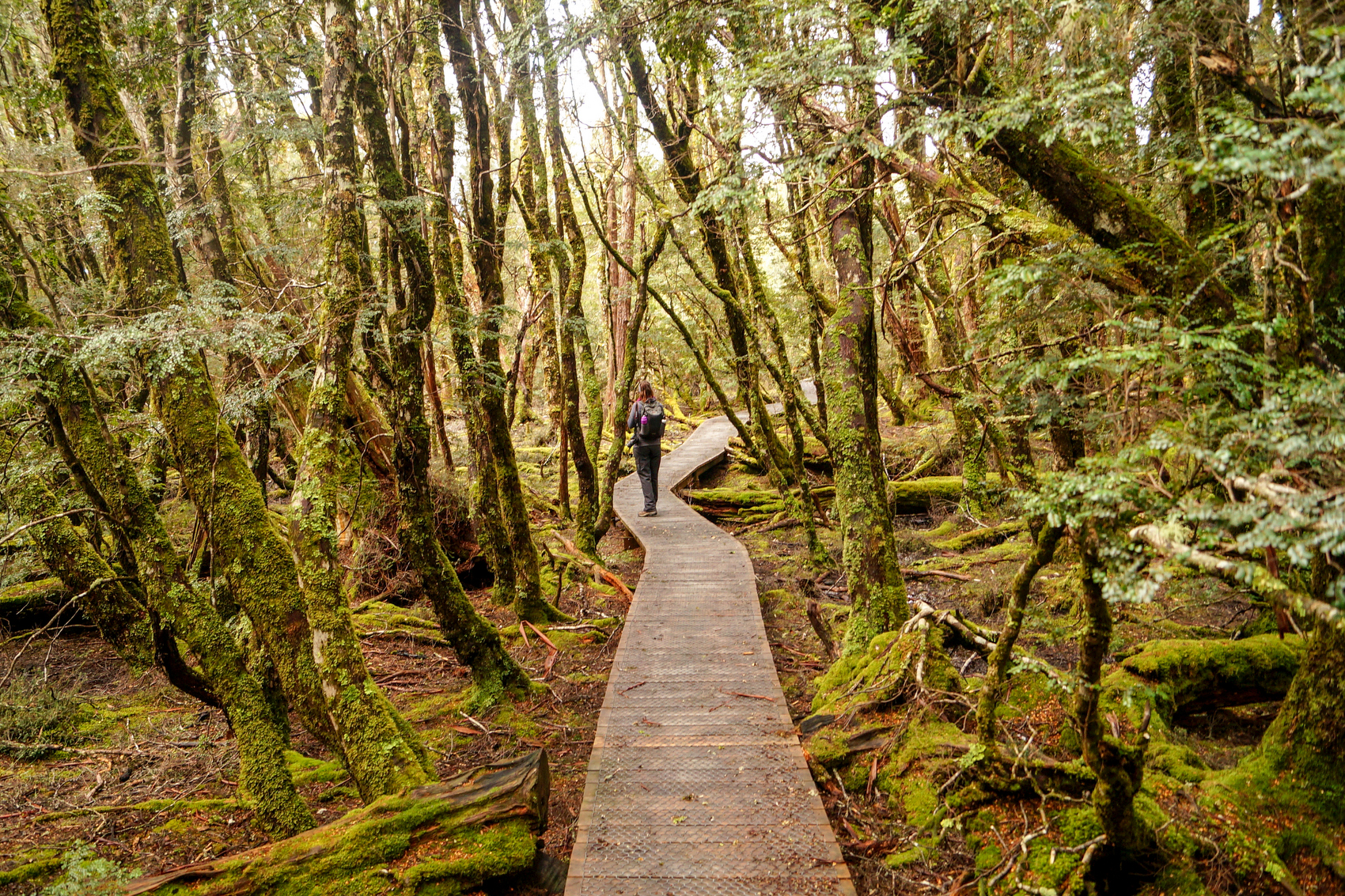
Best walks at Cradle Mountain
One of the things that makes Cradle Mountain so attractive to visitors is its accessibility. There are walks for all levels of fitness and abilities and they each deliver a glimpse into this beautiful region.
There are lots more walks than I’ve listed here, but these are my favourites.
Some are better in certain conditions. If you’re not an experienced walker, or not prepared for bad weather, I wouldn’t recommend any of the uphill hikes. Some are quite exposed and the fickle conditions can make it a very dangerous place.
I’ll put more information on this further down, but please read all available safety information and register for the medium/long walks. Unfortunately too many visitors underestimate the conditions and some find themselves in trouble.
Also, I don’t want to sound too preachy, but remember this environment is special so please don’t damage it by walking off the tracks.
Maps outlining some of these walks can be viewed here.
HANSONS PEAK – 3 HOURS RETURN, 4KM, HARD
To see why this is my favourite walk at Cradle, you’ll need longer than the estimated three hours. Hansons Peak rises above Dove Lake, to the east of Cradle Mountain. You start by walking clockwise along the Dove Lake Circuit track, then veer left (and up) onto the Lake Rodway track at a small junction about 500m in. From there it gets pretty steep, and there’s a part of the hike that requires holding onto chains while you climb up. It’s worth it though. From Hansons Peak itself you get an unusual view of a curvy Cradle Mountain.
But that’s not why I love this walk. Trek on a little farther and you’ll reach Twisted Lakes, a watery labyrinth on the plateau. Find the right position around the water and you’ll see Cradle’s peak reflected in the tarn.

The first time we tackled this route we turned off onto the Twisted Lakes track to walk down to Lake Hanson. Once we rejoined the Lake Rodway track we walked to Hansons Peak and then back down to Dove Lake. It was winter and a lot of the track was still icy as it didn’t get the sun until much later in the day. The walk took us about five hours.
On our next climb to Hansons Peak, we walked straight to the top along the Lake Rodway track, then along to Twisted Lakes. Instead of retracing our steps, we continued to the Face Track beneath Little Horn before dropping down to Lake Wilks and joined the Dove Lake Circuit near the Ballroom Forest to get back to the car park. This took about four hours.
While I love this walk, it’s steep and challenging in parts and not recommend for inexperienced hikers.
Cradle Summit, 8 Hours return, 12.8km, hard
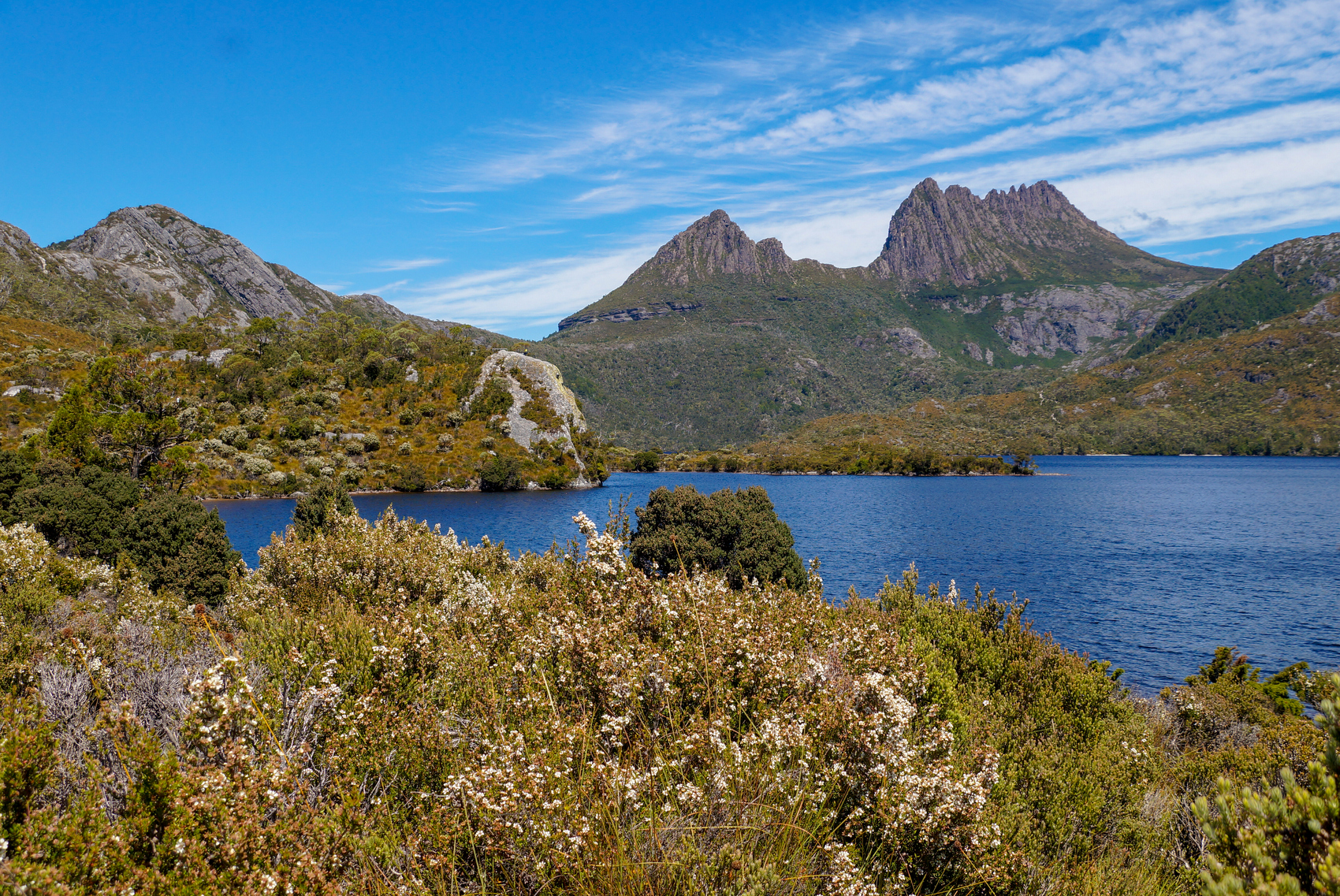
Fun fact: when you look at Cradle Mountain from Dove Lake, it’s hard to see its summit. So chances are, whichever one you think it is, it’s not.
Cradle Mountain curves, which is best seen from some of the walks to the east of Dove Lake, and it has four peaks: Little Horn on the left, Weindorfers Tower, Smithies Peak (which you probably think is the top) and then the Cradle Mountain summit.
At 1545m it’s the fifth highest mountain in Tasmania, so the hike is going to be a bit of a slog. There’s a lot of climbing and just before the summit there’s a few boulders to pull yourself over. But the view on a good day is spectacular as you look deeper into the national park and out to other peaks including Barn Bluff, Pelion West and maybe Mount Ossa, Tasmania’s highest mountain.
You can start from Dove Lake or Ronny Creek. Personally, I like the walk from Ronny Creek to Crater Lake, so I’d recommend that, with a stop at Marions Lookout. For something different on the return trip, take the Face Track from Kitchen Hut and return via the Dove Lake Circuit.
And a little advice: as you start to scale the mountain itself, don’t get so distracted by the scenery that you walk straight past the sign pointing left for the “Cradle Mountain summit”. It just makes a long day even longer. Urgh.
Cradle Valley Boardwalk, 2 hours one way, 5.5km, easy
When I started going to Cradle Mountain regularly, I was all about the hills. We could see the boardwalk from the shuttle to the lake, but I always had other walks I was more interested in.
Then one cool cloudy day, when there was still a bit of snow on the peaks, the weather didn’t look so good for climbing, so we decided to stay low.
The Cradle Valley Boardwalk starts at the interpretation centre and ends at Ronny Creek, although you can keep going to Dove Lake via Lake Lilla. You can also tack on a quick loop around the 10-minute Pencil Pine Falls and Rainforest Walk at the beginning.
The scenery along the boardwalk is different to almost any of the other walks I’ve done in the national park. It starts in dense rainforest, before opening onto buttongrass plains and snaking its way through scrub and bush. As the name suggests, it’s boardwalk all the way, which is great when it’s cold and wet and some of the tracks are a bit slippery.
If you’re not up to the whole walk, there is a shuttle stop at Snake Hill about one hour (3.4km) in.
Enchanted Walk, 20-MINUTES, 1km Loop, EASY
Even if you came to Cradle Mountain to do some serious hiking, don’t blow off the shorter walks. The low-level paths are just as special. Think streams, ferns, moss-covered scenery and walking under a canopy of old-growth temperate rainforest. They also make for great wildlife spotting.
The Enchanted Walk is a short flat walk at Cradle Mountain Lodge. If you walk it early in the morning, before the day visitors arrive, you’ve got a good chance of having it all to yourself. It’s also a perfect winter walk when there’s a dusting of snow.
Dove Lake Circuit, 3 hours, 5.7KM LOOP, easy
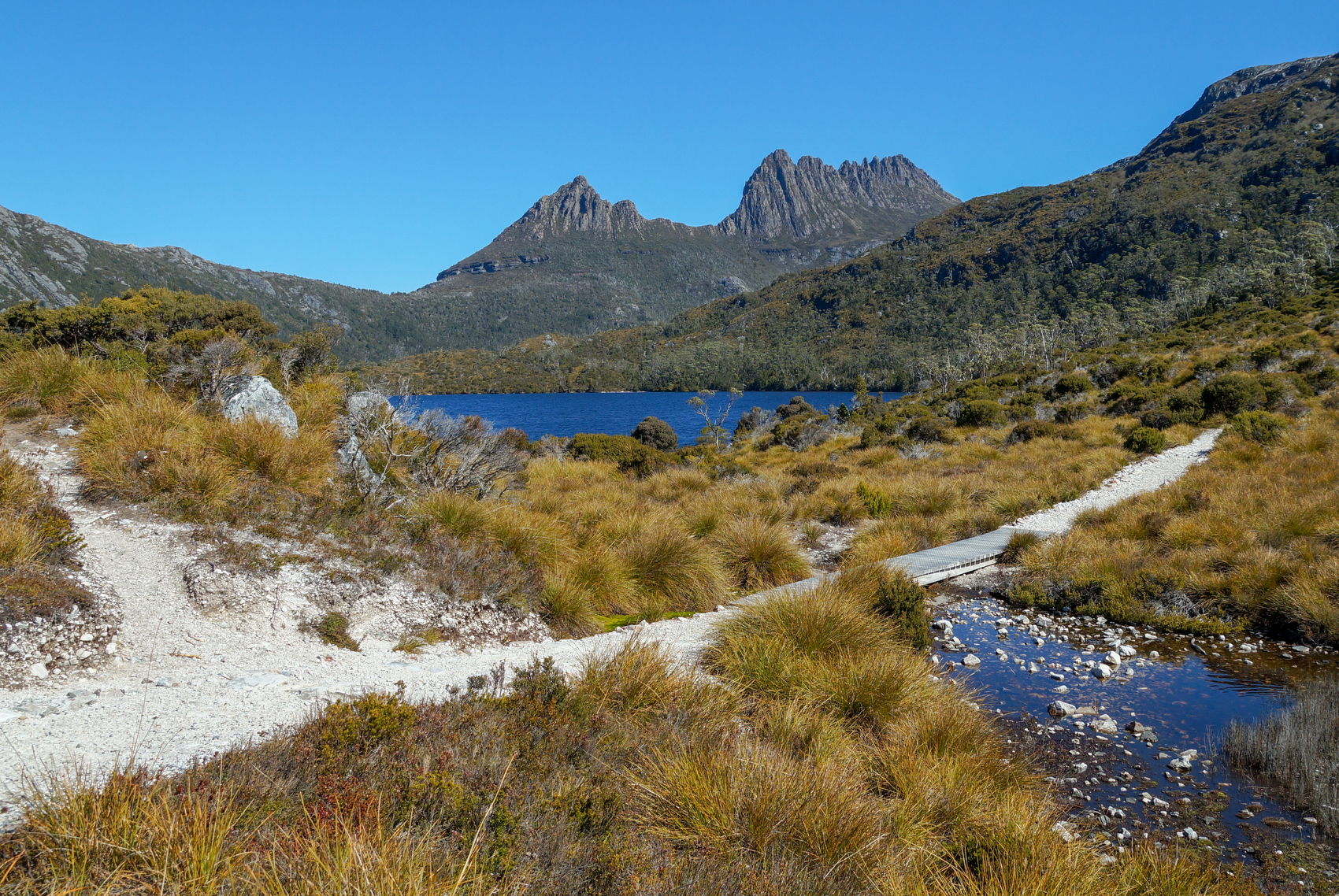
This is the most popular walk at Cradle and it’s easy to see why. It shows off so much of what makes Cradle special: the views, the nature, and the feeling of being somewhere magical.
You look out over Dove Lake while studying the surrounding hills, and brush past native flora such as myrtle-beech trees through the Ballroom Forest, King Billy Pines, tall pandani and fagus, which will be pretty colourful if you catch it at the right time. There are steps down to the quartzite beaches where you can take a dip if you’re game.
The view up to Cradle Mountain at the far end of the walk is striking and then of course there’s the boatshed, which features in a lot of photos of Cradle. The boatshed is only about 10 minutes to the west of the car park, so easy to visit even if you’re not up for the whole loop.
The circuit isn’t flat all the way (there are some inclines here and there, and some gravel track with tree roots and stone steps) but it is definitely manageable for most fitness levels.
King Billy track, 40-minutes, 2km loop, easy
Another beautiful low-level walk. What I love about the King Billy track is how easy it is to feel so far away from it all. You leave the Cradle Mountain Lodge and a few minutes later you’re deep in the rainforest, with King Billy Pines towering above. Some of these giants are more than 1000 years old.
Then you’ll hit some clearings, walking on the boardwalk through the scrub; a nice change of scenery on a short walk.
There’s a few steps, but the boardwalk makes it easy.
CRATER PEAK, 2.5 HOURS RETURN, 7KM, MEDIUM
This isn’t a hugely popular walk, and one we did really because we’d already done so many of the others. But I enjoy seeking out new areas to explore at Cradle Mountain and getting a sense of the national park beyond the mountain and Dove Lake.
Most people passing Crater Peak are probably on their way to Kitchen Hut and beyond, avoiding the steepness of Marions Lookout by taking the Horse Track. It was winter when we tackled this, and while it was still tricky to navigate, it wasn’t as tough as some of the other tracks would have been in those conditions. I’ve also walked this track in bucketing rain, and it wasn’t too challenging then either.
I like the deep blackness of Crater Lake and having seen it so often from the east, it was interesting to get another perspective from the plateau. You don’t get great views of Cradle Mountain from here, so I wouldn’t choose this as your only walk . But on a busy day, if you’ve already ticked off a few of the others, this will be a less crowded option.
As with most of the walks, you don’t have to come back the way you went up. The track is pretty easy going after Crater Peak, if you wanted to loop around to the Face Track, or back to Marions Lookout.
Overland Track, 6 days, 65km, difficult
I can’t talk about Cradle Mountain without mentioning this hike. It’s an epic journey through the heart of the Tasmanian World Heritage Area, connecting Cradle Mountain with Lake St Clair.
Walkers need to be completely self-sufficient and carry everything needed to survive in the wilderness for nearly a week.
You’ll see one end of the walk marked at Ronny Creek. Between October and June this is the starting point as the track can only be walked north to south in peak season. For the rest of the year you can walk in either direction.
I walked the track in the middle of January in 2015. It was wet, cold, sunny, tiring, spectacular and damn hard going.
- Read more about walking the Overland Track.
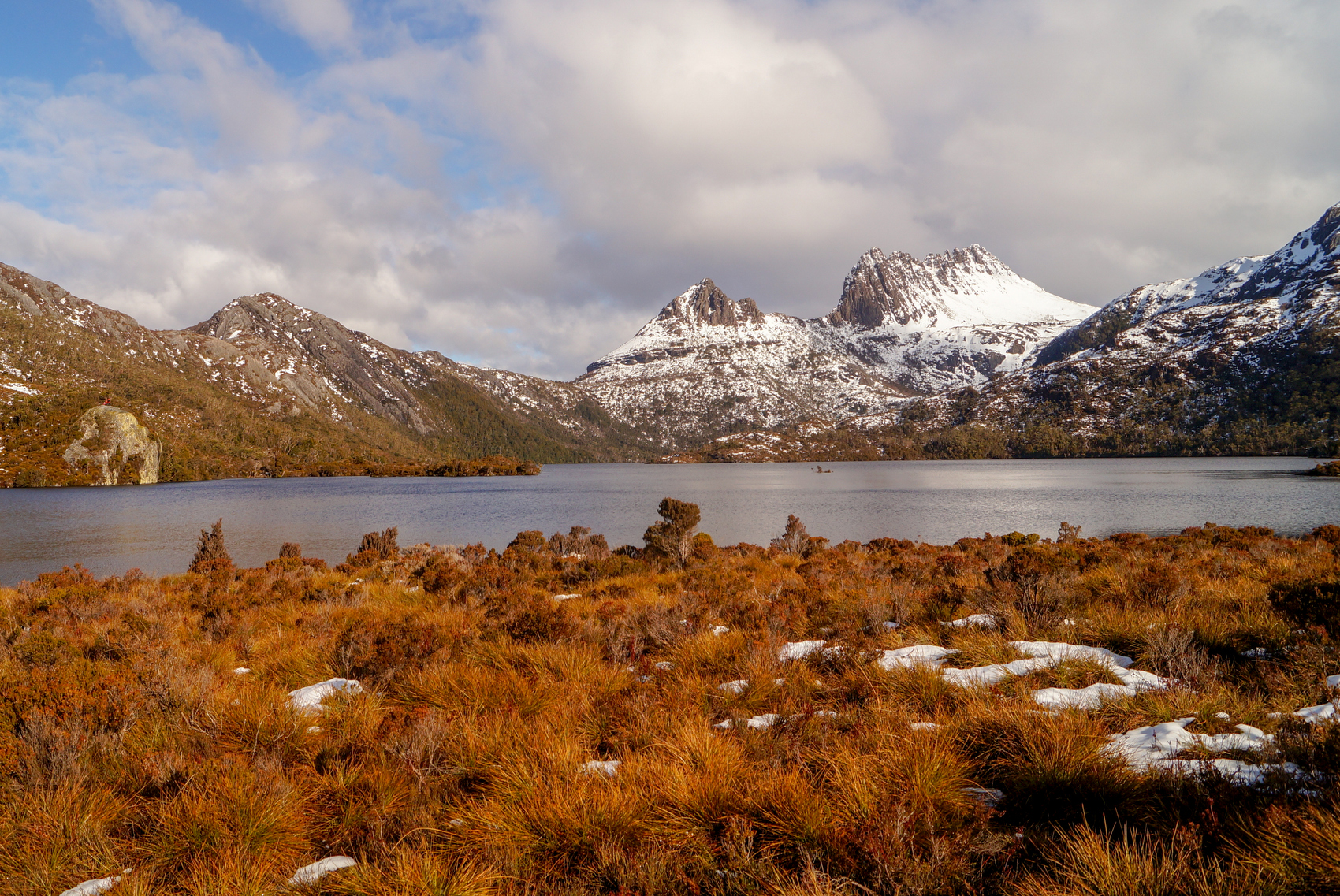
things to do at cradle mountain
Exploring Cradle Mountain doesn’t mean lacing up your hiking boots every day. There are lots of other activities, depending on your penchant for adventure. If you want to slow it down, that’s easily done too (and can even include a glass of bubbly.)
Canoeing on dove lake
I inquired about canoeing several times, but every time I asked the tours weren’t running, either because it was out of season (they only operate in summer) or the weather wasn’t good. So when we finally went for a paddle last month, it made sense when the guide told us only about 200 people had been canoeing in the seven years the tours had been running. A lot of things need to go right.
But if you’re at Cradle in the summer and the weather (particularly the wind) is co-operating, I recommend seeing if you can jump on a tour. It’s also nice to give your legs a rest if you’ve been hiking a lot, although your arms may not thank you later.
The tours last for about four hours and that includes a safety briefing, getting to Dove Lake and back, setting up the canoes, and about three hours out on the water, with a welcome morning or afternoon tea break.
The first part of our trip was easy going as we were paddling with the wind. The way back took a bit longer and my shoulders paid for it for a day or two. But the perspective from the water is really different, and I felt I could take in a lot more of the scenery than when I walk, because I didn’t have to pay that much attention to where I was going.
- The tours are run by Cradle Mountain Lodge. The cost was $95 per person in October 2021.
scenic Helicopter flights
When you walk and play around Dove Lake and Cradle Mountain, it’s easy to forget that it is such a small patch of an expansive national park.
Of course most scenic flights are going to be pretty spectacular, but I found it particularly fascinating at Cradle Mountain because what you can see on foot is so limited by where you’re prepared to walk to, or where you can walk to.
I’d never heard of Fury Gorge until we descended into it and looked out on untouched wilderness rising up the slopes. Out of the gorge, buttongrass and dark brown tarns dotted the plateau, before giving way to an undulating landscape that stretched into the horizon, with a glimpse of Tasmania’s highest peaks in the distance.
- For more information see Cradle Mountain Helicopters.
- Read more about flying over Cradle Mountain.
tasmanian Devil sanctuary
One thing I learnt when I started travelling outside Australia is that while a lot of people have heard about the Tasmanian devil (largely thanks to Looney Tunes), they don’t often know anything about them.
So let’s clear one thing up nice and early: they don’t spin.
Despite growing up in a rural area, I’ve never seen a devil in the wild and it’s unlikely you will either when visiting Tasmania. The best place to see them is at a wildlife park or a sanctuary such as Devils@Cradle, which focuses on conservation.
Sanctuaries like this are particularly important because the devils are considered a threatened species. The Devil Facial Tumor Disease has killed up to half the devil population in some areas and there are efforts to build quarantined insurance populations.
You can visit the centre during its opening hours, but I recommend timing your visit with one of the guided tours to learn more about Tasmanian devils and the threats they’re facing. The sanctuary also has spotted-tail quolls (pictured above) and eastern quolls.
- For more information see Devils@Cradle.
- Read more about visiting the sanctuary.
Waldheim Alpine Spa
Bubbles with a side of bubbles. Thanks how to best describe my visits to the Waldheim Spa.
Every time I think about going to the spa I check out all the treatments and massages on the menu. But I always end up in what may just be my favourite place at Cradle Mountain. The sanctuary.
The sanctuary is a private space that you can book by the hour. It overlooks the Pencil Pine River and forest at the back of Cradle Mountain Lodge. There’s an outdoor hot tub, an icy plunge pool, a sauna, steam room and shower. Or you can stretch out and enjoy the view. Oh just writing about it makes me want to go back right now.
There’s a menu from which you can order nibbles and drinks. Towels, robes and slippers are provided. You just need to pack your swimmers.
While I’m sure all the other treatments on the spa menu are incredible, at $130 an hour for two people (correct as of October 2021) I think the private sanctuary is great value and such a treat. And it’s even incredible in the rain.
- For more information see the Waldheim Alpine Spa at the Cradle Mountain Lodge.
Canyoning at cradle mountain
This is the only activity on this list I haven’t done personally, but everyone I know who’s done it has loved it. So it would be remiss to leave it out in case donning a wetsuit, abseiling into a canyon and jumping into waterfalls is just your thing.
Cradle Mountain Canyons regularly runs two types of tours: the Dove Canyon trip, for which you’ll definitely want to pack your sense of adventure, and into Lost World Canyon, which is pitched as an introduction and open to anyone over eight years.
- For more information see Cradle Mountain Canyons.

Accommodation at Cradle Mountain
There are a few options for accommodation at Cradle Mountain, depending on your needs and budget. There are more choices if you don’t mind a bit of a drive. Moina is about 15-20 minutes away and Sheffield about an hour.
I’ve stayed at the first four listed here, but will include the other options so you know what’s available. Prices vary a lot depending on when you visit and how far in advance you book.
Cradle Mountain Lodge
While nothing is really that far away at Cradle Mountain, the Lodge is the best located accommodation. It’s metres from the official national park border and walking distance to quite a few of the other activities.
There’s a shuttle stop across the road at the interpretation centre, a restaurant and bar onsite and don’t forget the spa. Quite a few walks leave from here, including the Enchanted Walk and King Billy Track I mentioned above. The Cradle Mountain Boardwalk starts across the road.
The Lodge also organises a lot of activities, including guided walks, canoeing, wine and cheese tasting, and night-time wildlife tours.
All of the rooms are cabins, so are not attached to the main building. This may not be ideal in winter depending on your desired comfort level as you’ll have to walk outside to get to the reception area, lounge, and restaurant.
We stayed in one of the Pencil Pine Cabins, the most basic of the options here, but it was stylish and cosy. One day I’ll check out the King Billy Suite!
One thing to note here, there are no TVs in the cabins. Personally, I love that, but it may be a surprise to some people. Also, there’s no wifi in the cabins (not unusual at Cradle) but there is in the main building.
- For more information see Cradle Mountain Lodge.
Cradle Mountain Wilderness Village
The Wilderness Village is walking distance, up a slight hill, from the visitor centre, so still a good location if you don’t want to be driving much. Like the Lodge, all the rooms are cabins and can be quite spread out so you might end up in one that’s farther than you feel like walking.
We stayed here on our most recent trip, mainly because we wanted self-catering facilities (we were travelling with a toddler). Between our group we booked a two-bedroom chalet and a spa cottage. The self-catering facilities aren’t extensive so if there’s something in particular you think you will need, ask in advance.
The cabins are simple, but stylish. And they have TVs, in case that’s important to you. But again, no wifi. The spa cottage, which has the spa in the centre of the room looking out into bushland, was relaxing and quiet.
Both cabins had little balconies and from them we couldn’t see any of the other cabins. But we did see echidnas, wombats and wallabies. The only traffic is from guests and visitors to the restaurant, so you’ve got a good chance of seeing some cute critters.
Near the reception and restaurant building is a small outpost called Provedore Hanson. You can get hot drinks, snacks, some groceries and even breakfast packs to cook in your cabin. We liked walking down for a morning coffee and treat. Inside the main building is a guest lounge and kids area.
- For more information see the Cradle Mountain Wilderness Village.
Cradle Mountain Hotel
The Cradle Mountain Hotel is located not far from the Cradle Mountain Road junction, and it’s the farthest accommodation option from the other facilities such as the visitor centre and interpretation centre. This means you’ll probably need to drive up the road every time you want to go exploring.
The big plus of staying here though is that everything is in the one building – reception, restaurant, rooms. We stayed in a split level king spa room. The bed was on the same level as the door, then there were stairs to a living space and balcony.
The Wilderness Gallery is based at the hotel. I’ve been through here a few times and it’s a really lovely space. Entry is free for hotel guests.
- For more information see Cradle Mountain Hotel.
Waldheim Cabins
This is in a slightly different category to the other options I’ve listed. The Waldheim Cabins are the only accommodation available inside the national park itself (all the others are outside the boundary).
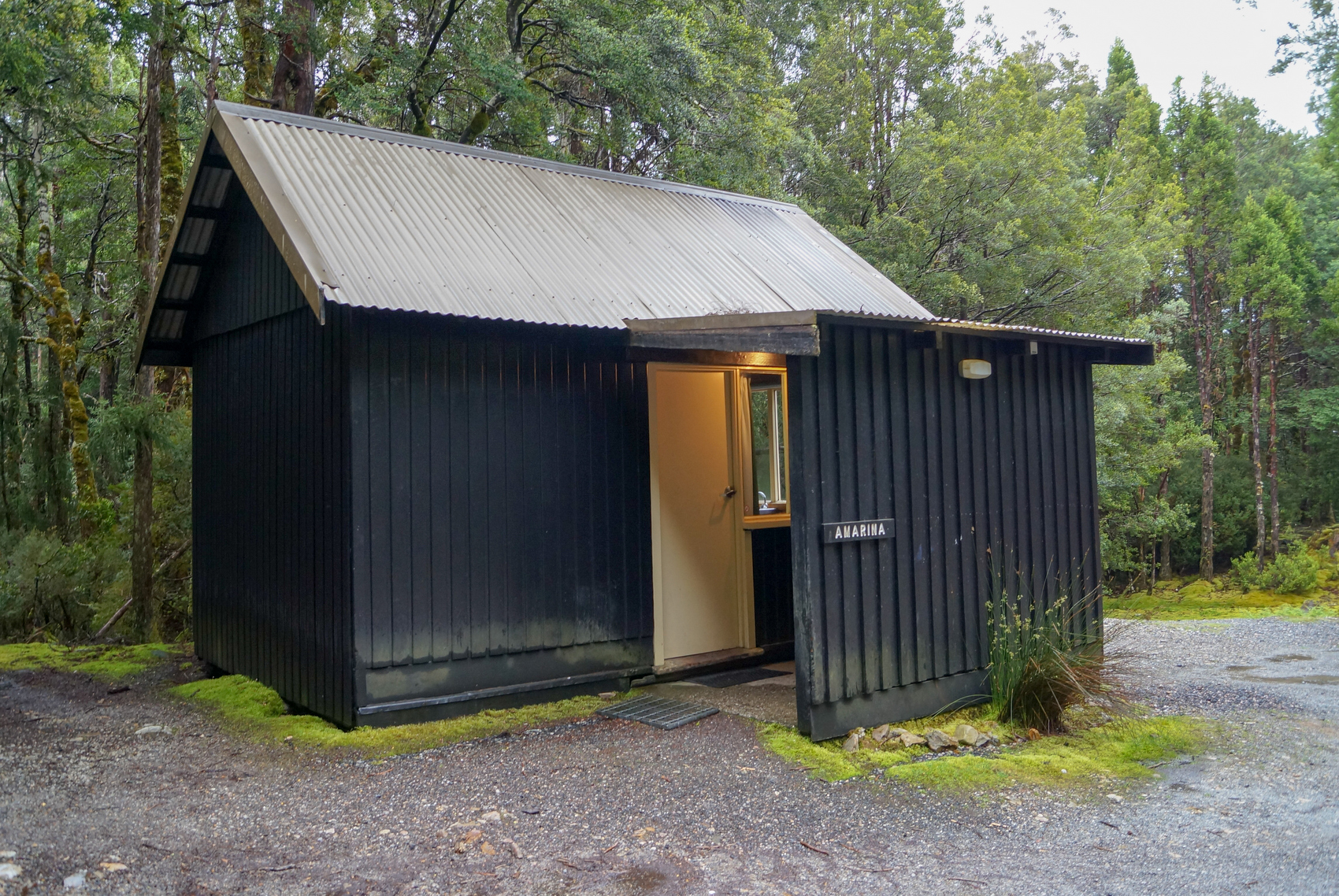
The cabins are near Ronny Creek, about six kilometres from the visitor centre, and sleep between four and eight people in single bunk beds. You need to bring your own bedding, although linen can be arranged at a cost. There are basic cooking facilities, and toilets and showers are located in two amenities blocks.
I stayed here the night before I started my walk on the Overland Track. The start of the track is just down the hill from the cabins.
- For more information see the Tasmania Parks and Wildlife Service.
Other options
Cradle Mountain Highlander Cottages: The Highlanders are down the road from the visitor centre and have self-catering cabins sleeping up to seven people. This is a good option for families and groups.
Discovery Park: There’s a range of budget accommodation here including powered and unpowered tent and caravan sites, cabins and shared backpacker dormitories. There’s also a store and laundry. Discovery Park is across from the visitor centre.
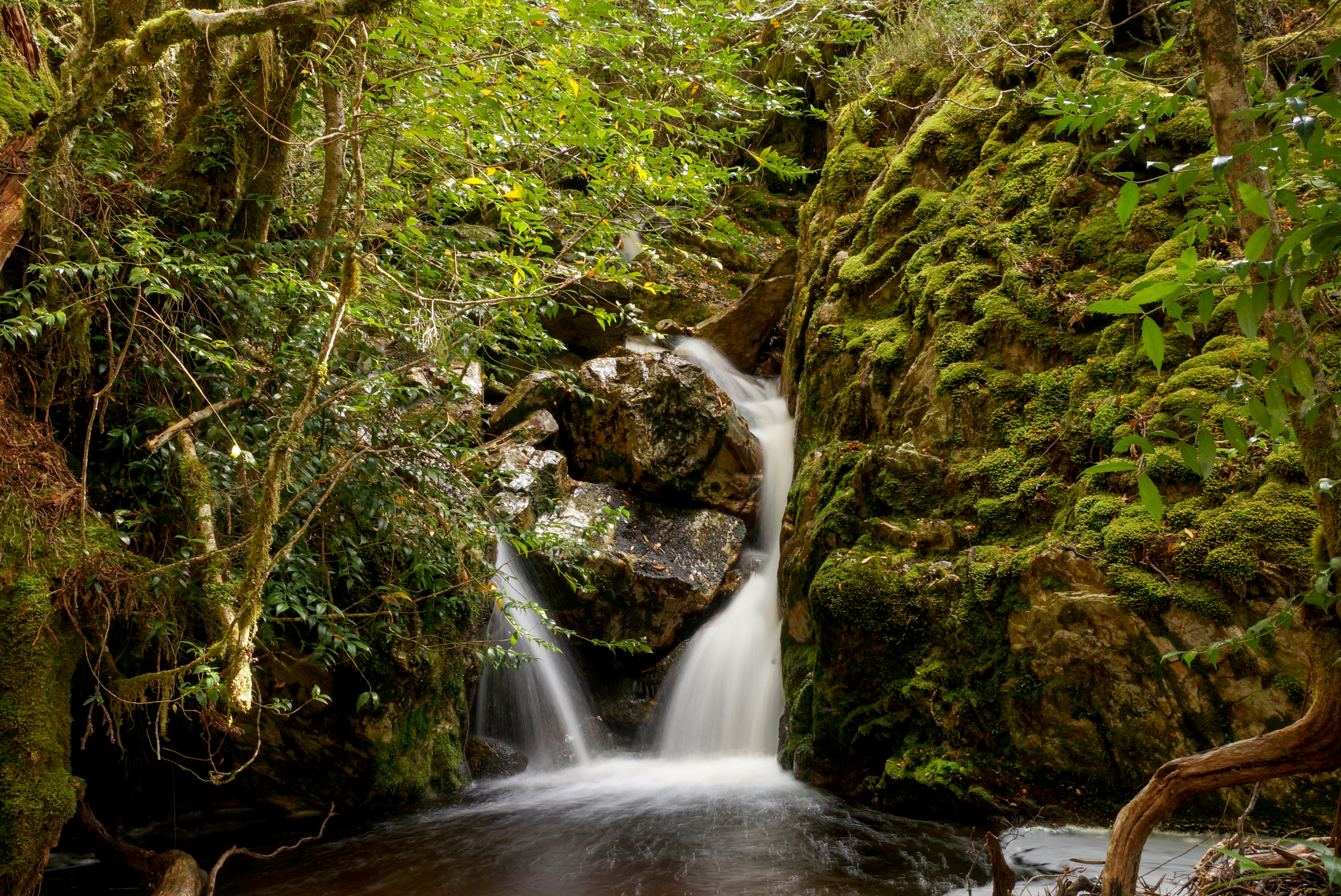
Where to eat at Cradle Mountain
I’m no food blogger, so I’ll keep it simple. There are three gourmet restaurants based at the main accommodation places.
The Highland Restaurant is at the Cradle Mountain Lodge, Altitude Restaurant at Cradle Mountain Hotel (also open for lunch) and Hellyers Restaurant at the Cradle Mountain Wilderness Village (Tuesday to Saturday). They all showcase Tasmanian produce.
If you’re looking for something more casual, there’s the Tavern Bar and Bistro, at the Cradle Mountain Lodge, which is open for lunch and dinner.
There’s also a cafe at the visitor centre, a kiosk at Discovery Park, and Provedore Hanson at the Cradle Mountain Wilderness Village.
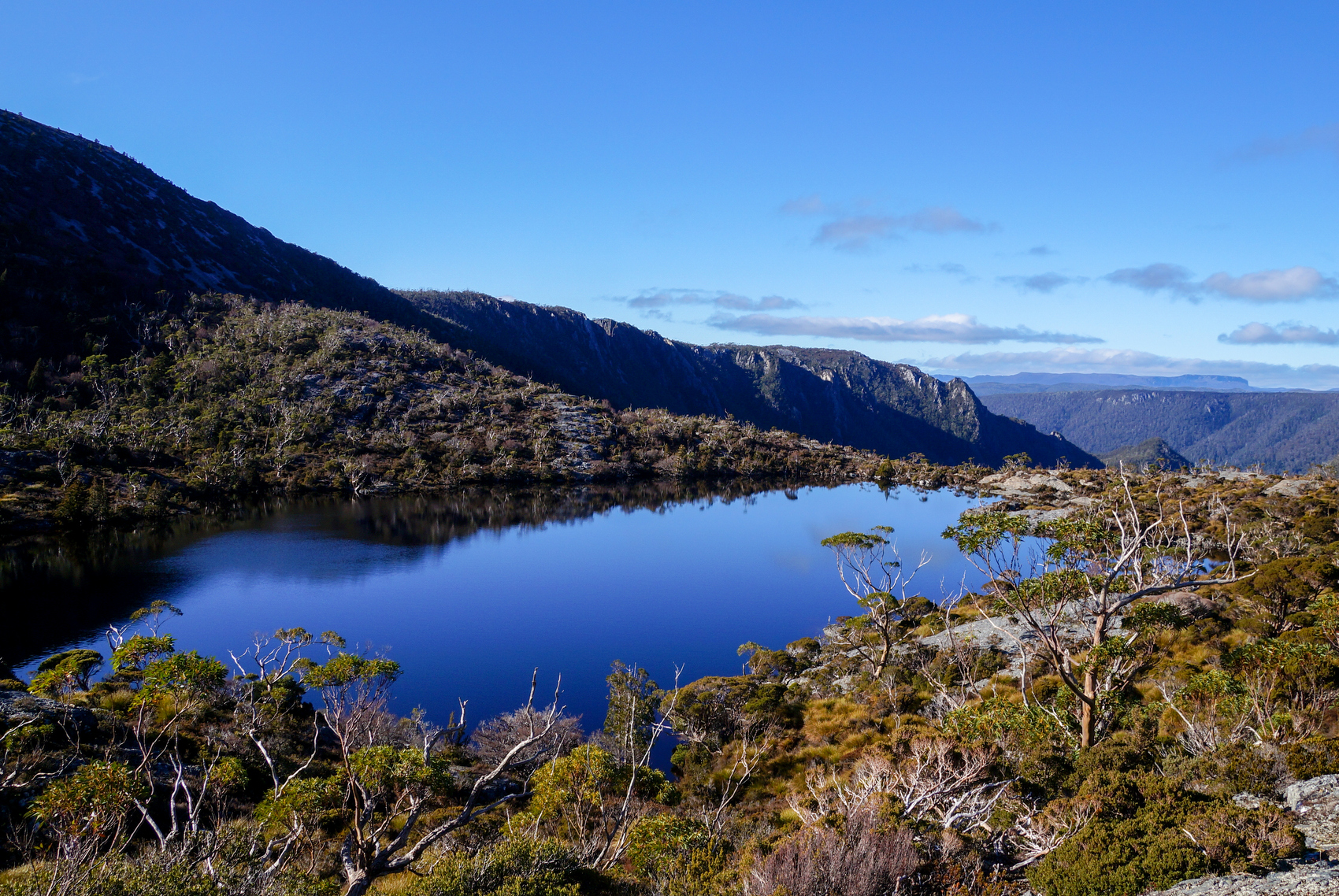
What you should know
When to visit: While you have a better chance of good weather in the summer, conditions here are fickle so that’s not guaranteed. There are a lot more visitors in the summer, so accommodation options can be limited and there will be more people on the trails. Holidays such as Easter and long weekends can also be busy.
Some of the best walking days I’ve had have been in early winter and late spring, when it’s not too cold, not too hot, and not too busy.
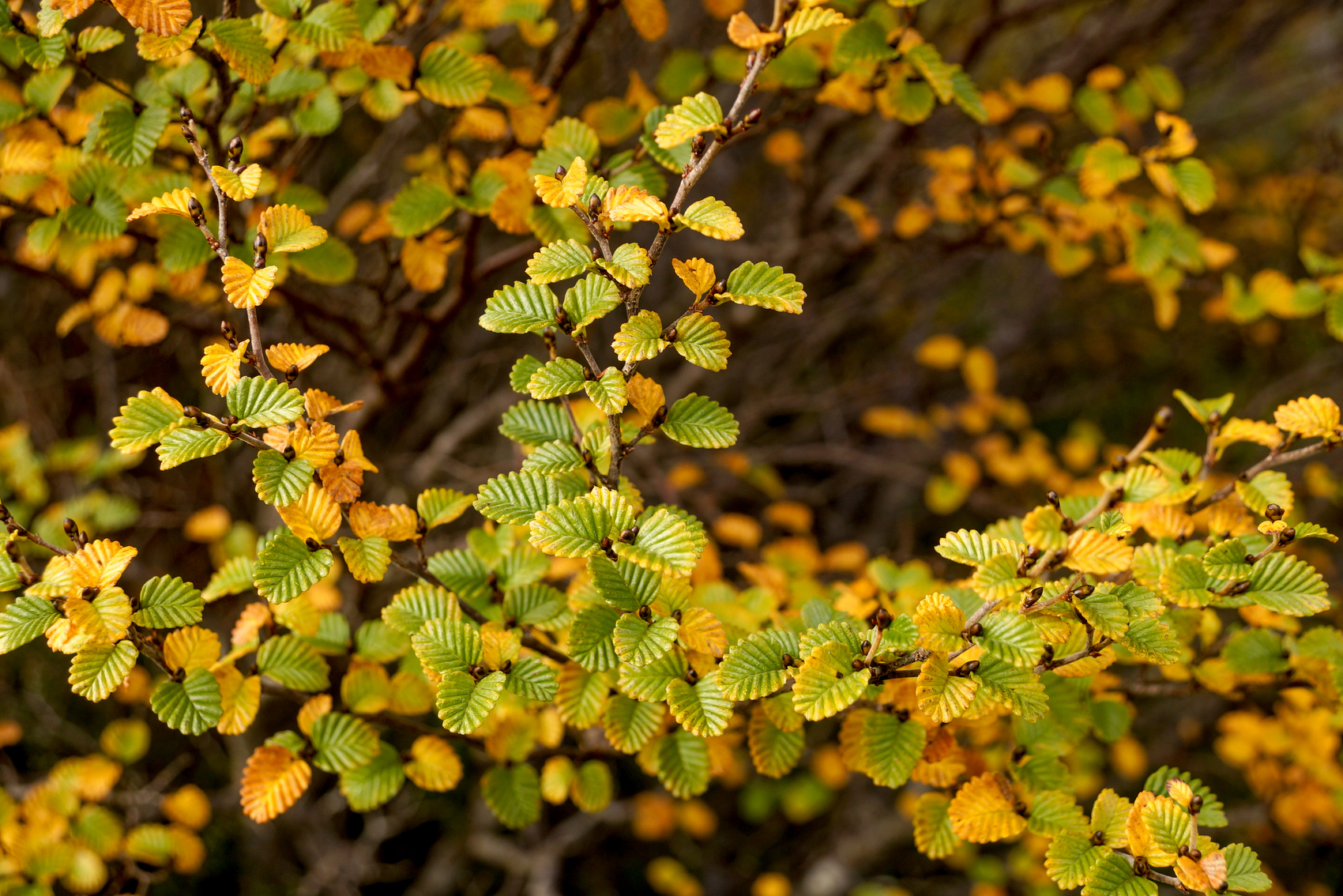
Special times to visit: In autumn, the leaves of Australia’s only cold-climate deciduous tree, fagus, (Northofagus gunnii) change from green to red to gold in a spectacle known as the turning of the fagus. Fagus is unique to Tasmania, and even then, found in only two places on the island: Cradle Mountain and Mount Field National Park.
The “turning” happens in late April/early May but is unpredictable. If you’re set on seeing it, call the visitor centre in advance to see how it’s progressing. Crater Lake is one of the best places to see the fagus.
- Read more about the turning of the fagus.
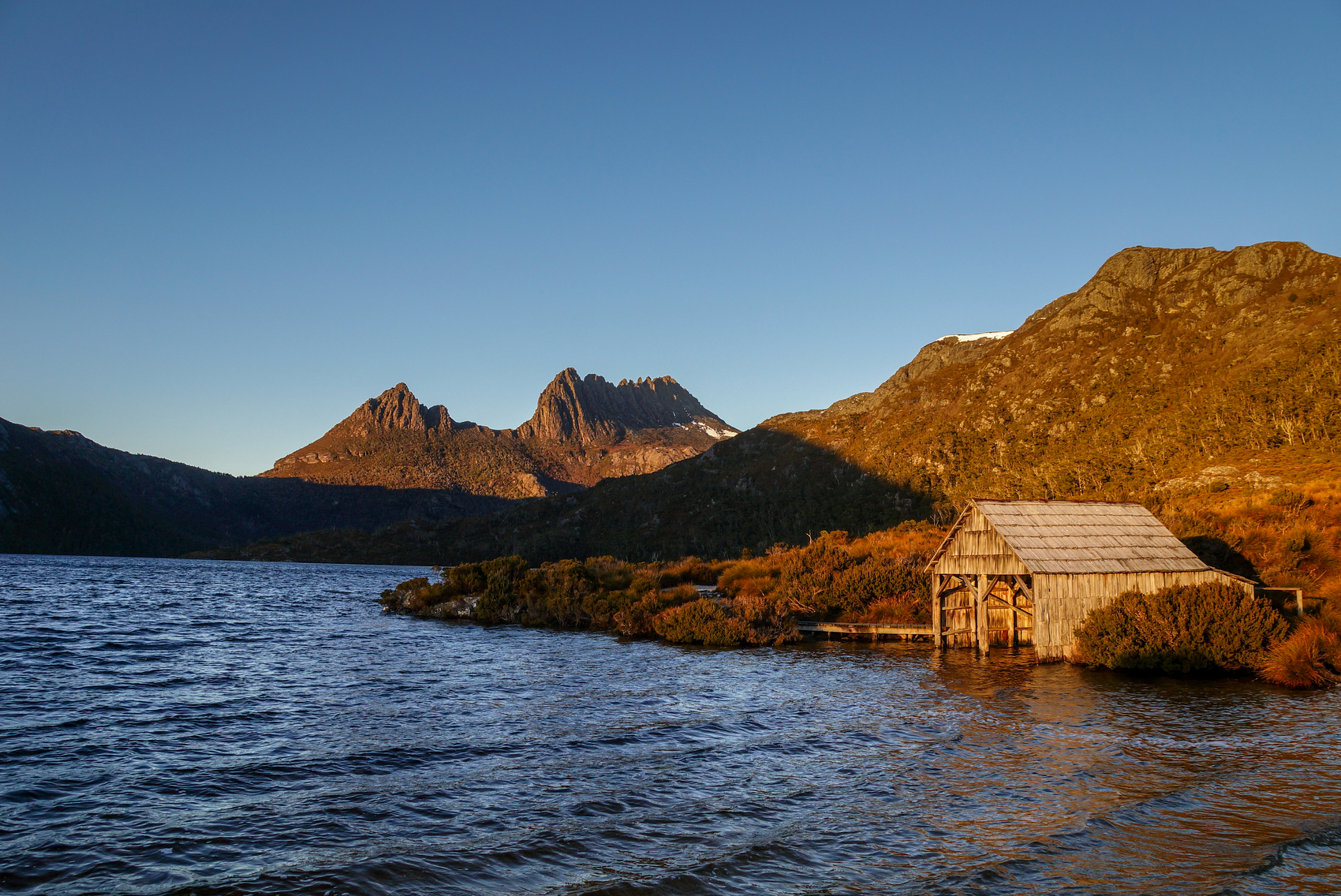
More on the weather: The changeable weather here can not be understated. I started walking the Overland Track in bucketing rain and icy winds – in the middle of January. While it was close to 30C during another visit in January, it was forecast to snow the following week. I’ve enjoyed clear sunny days in winter, although it was still damn cold.
The point is to expect, and be prepared for, any weather, regardless of the time of year.
What to pack: As I said above, a lot of people underestimate the conditions here and end up in trouble, and that’s not just on the longer walks. I won’t go into much detail about packing because it’s not my area of expertise but if you’re planning on doing some of the more challenging hikes, make sure you’re prepared.
Caro from LotsaFreshAir has an extensive day hike packing list here (although skip the matches because you can’t light a fire in the national park). Even on the shorter alpine walks you should carry lots of water, snacks and be prepared in case conditions change.
I always bring a rainjacket and a couple of extra layers no matter the time of year. Even in summer the alpine evenings can be cold. Also, the temperatures at Dove Lake are often a little cooler than at the visitor centre and it can be quite windy, so keep that in mind even if you’re just going down to take some photos and walk to the boatshed.
If you’re not sure if you’re prepared for the walk you want to do, chat to the staff at the visitor centre. There’s also a shop there where you can buy some hiking items including thermals, jackets, beanies etc.
While some of the walks would be fine to do in running shoes or sneakers, I would recommend hiking boots if you have them. I personally wouldn’t tackle any of the uphill hikes without them.
Where to see wildlife: Keep your eyes peeled on all walks, but in our experience we nearly always see wombats at Ronny Creek (particularly on the side of the hill that goes up to Waldheim Chalet).
We also see a lot of wallabies, wombats and echidnas around the accommodation venues. The animals are likely to be more active at dusk, so that can be a good time to try some of the shorter walks around Cradle Mountain Lodge. Don’t feed any of the wild animals and don’t get too close.
Cradle Mountain in the winter: If you’re visiting during winter, check the roads are open, particularly if snow is forecast. If the snowfall is low, some of the roads may be open only to 4WD vehicles, or closed completely. Sometimes visitors can get trapped at the park if snow falls overnight and blocks the roads.
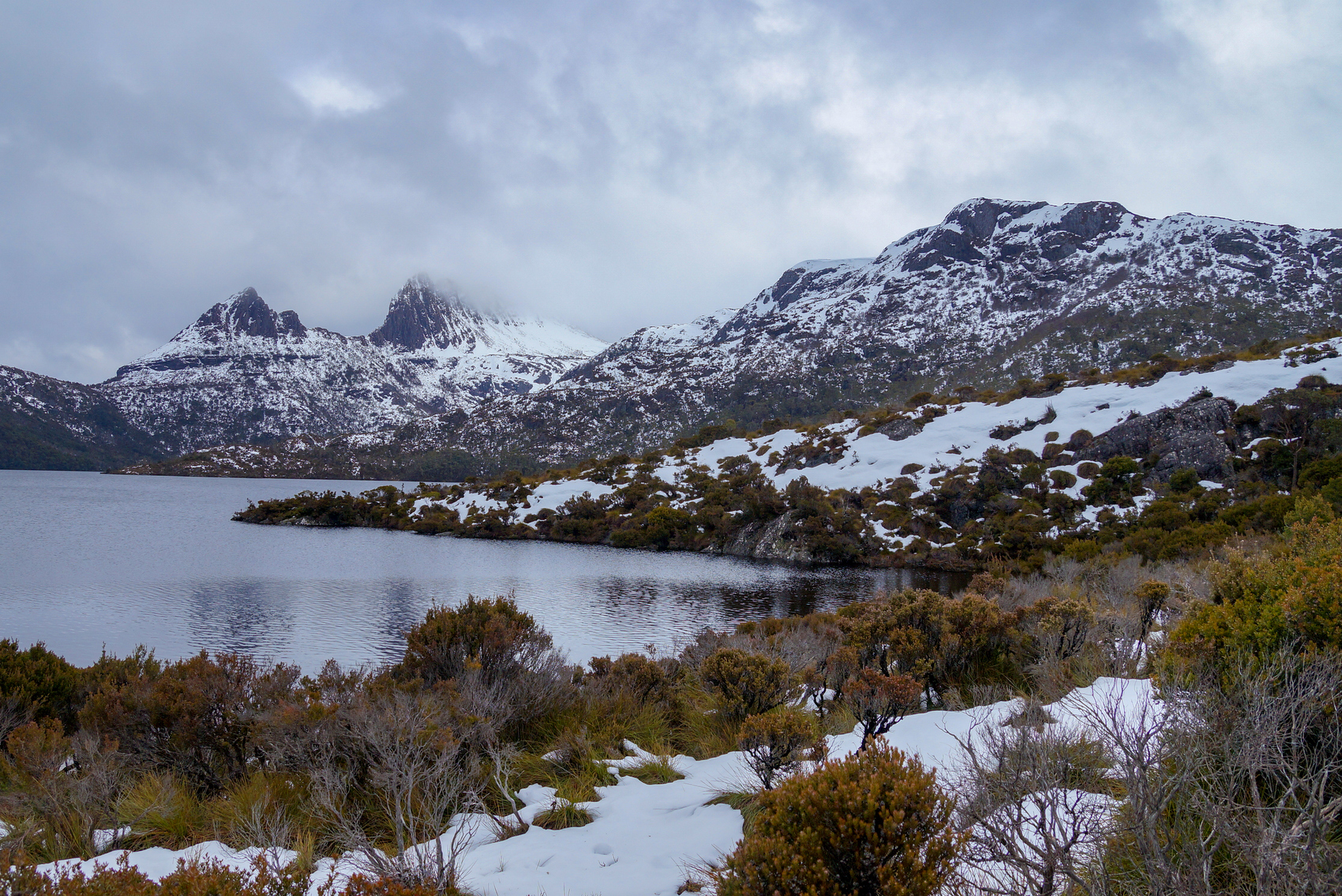
Tips for getting around: Depending on where you’re staying, you may not need a car to get around once you arrive at Cradle Mountain. There is a big car park at the visitor centre, although this can fill quickly in peak season.
Your parks pass will include access to the shuttle bus service that runs to Dove Lake. Unless you drive down to the lake early (usually before 7.30am) the shuttle is the only way to get there, other than walking seven kilometres. The first and last shuttle times will be advertised at the visitor centre each day.
The frequency of the buses depends on the time of year, conditions and how busy the park is. The trip to Dove Lake takes about 15 minutes.
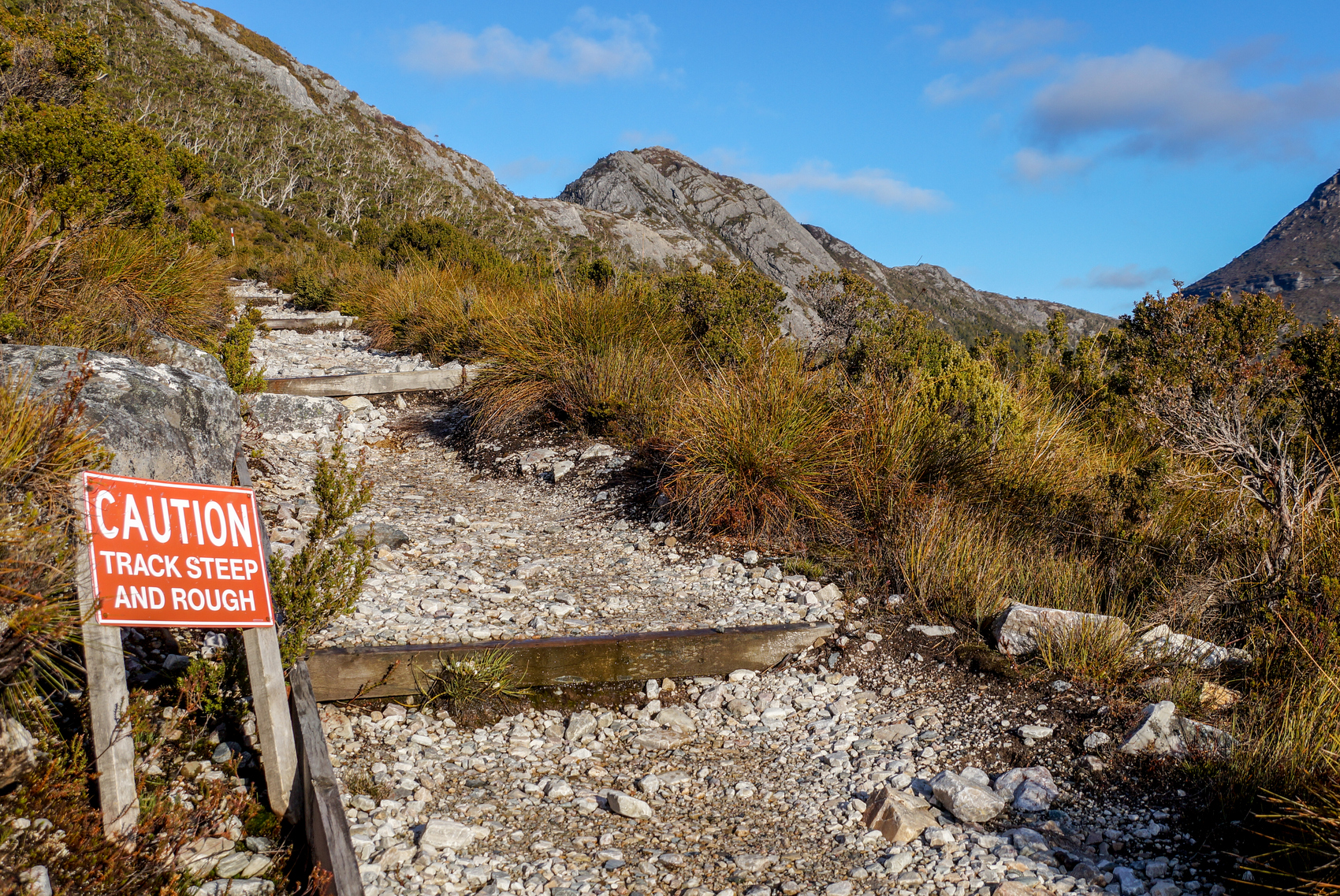
Tips for walking: The staff at the visitor centre are great at advising on the best walk for your interests, abilities and the conditions. It’s recommended that you register before setting off. There are registration books at several points, including the interpretation centre, Ronny Creek and Dove Lake. These books are checked if you are later reported missing. Don’t forget to sign them when you return.
Free maps are available at the visitor centre and are good enough if you’re not venturing beyond the walks immediately around Dove Lake. If you’re planning to explore more, purchase a more detailed topographical map (also available at the visitor centre).
Supplies: While you can buy some groceries at Cradle Mountain, if you’re planning to self cater I would recommend stocking up before you arrive. Burnie, Devonport and Launceston have big supermarkets (Woolworths and Coles etc), and some of the towns nearby such as Sheffield will have smaller local supermarkets and stores. Fuel is available at the visitor centre.
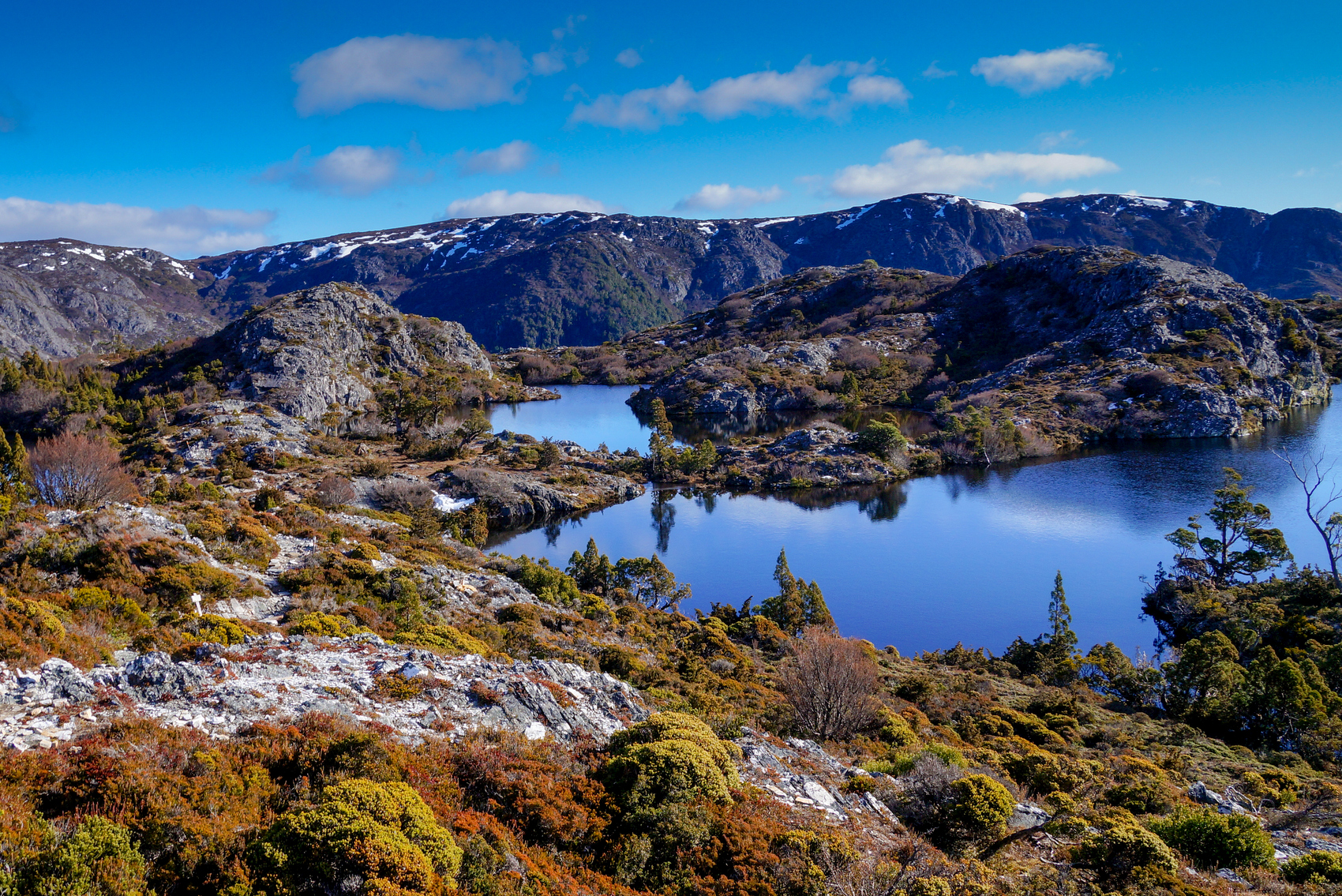
Caring for the environment: There are no rubbish bins within the park, so bring everything out with you. And I know I’ve said it already, but don’t walk off the path. This is for your safety but also to preserve the spectacular landscape and wilderness here. After all, that’s what you came to see.
Have I missed something you want to know? Leave a note in the comments.

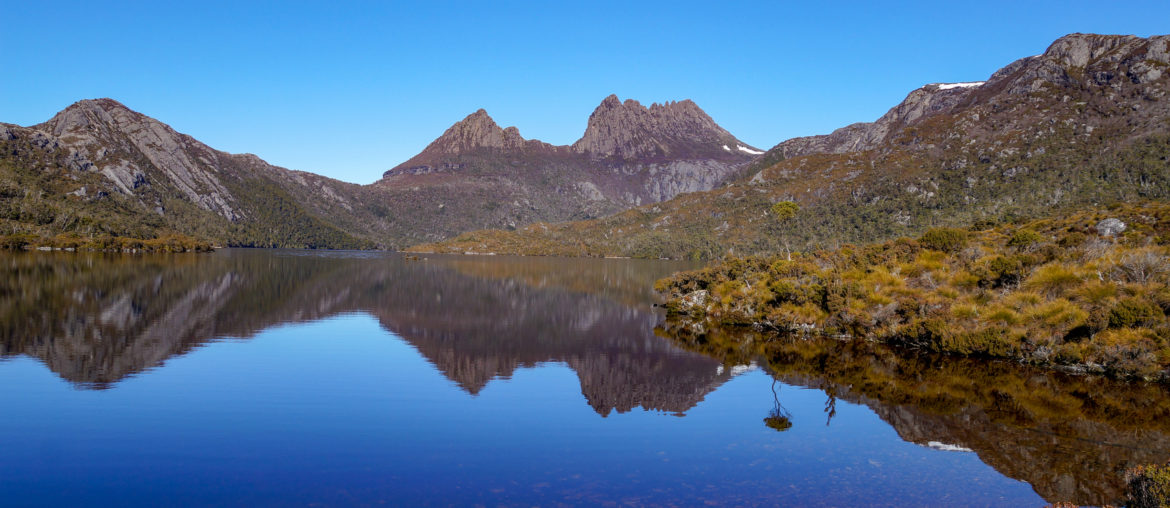
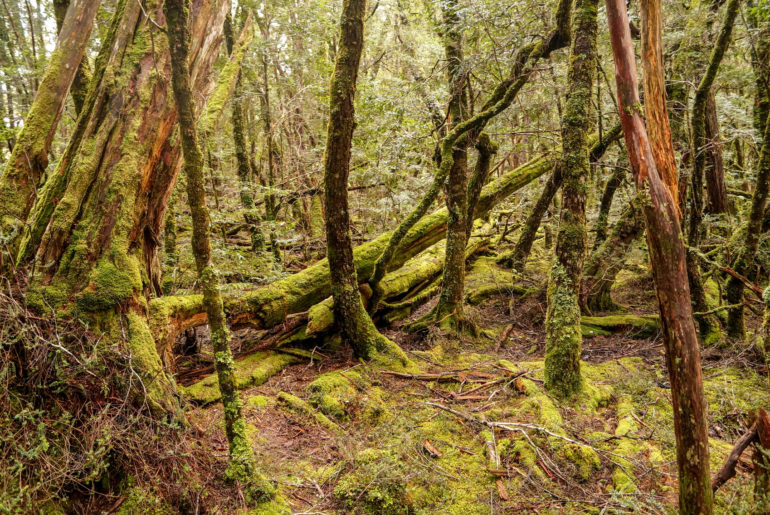

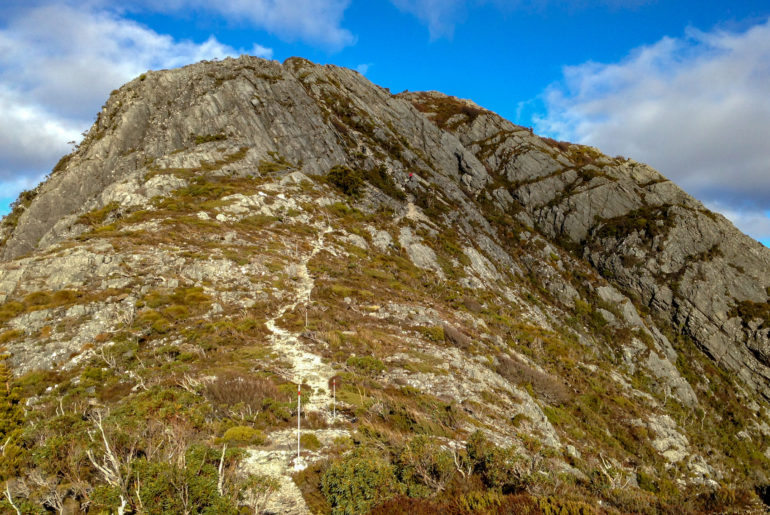
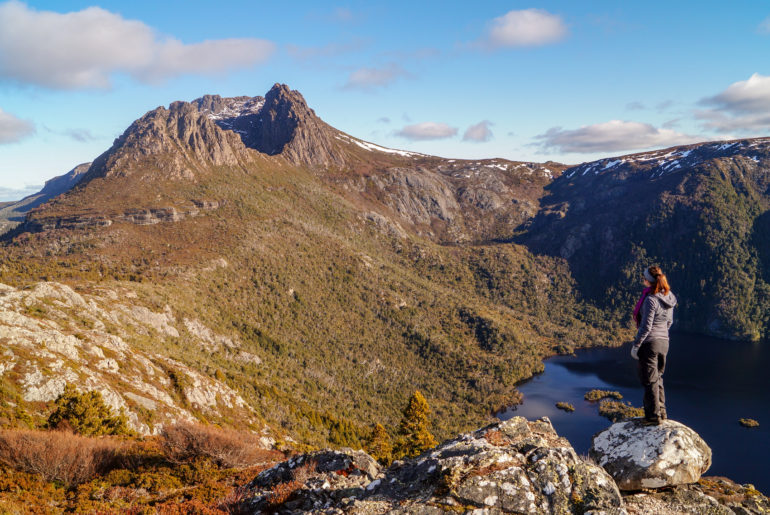








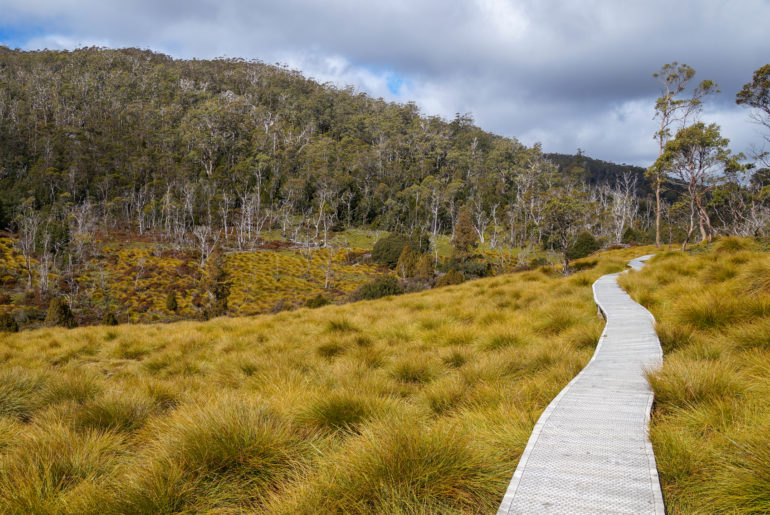
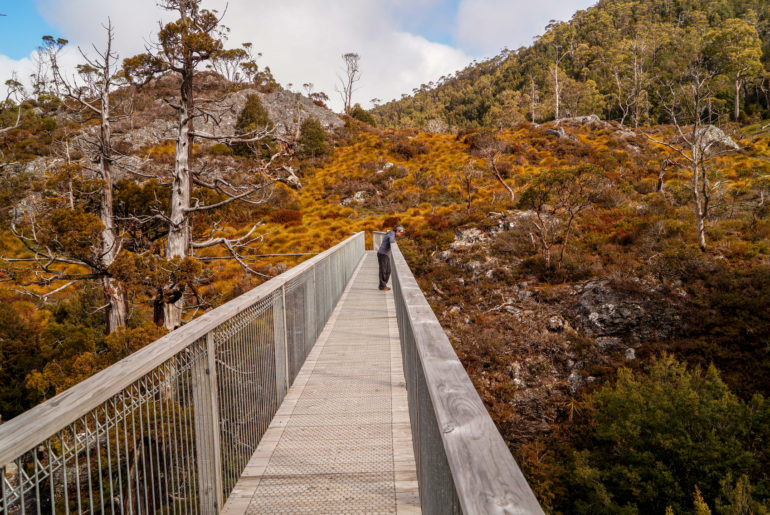
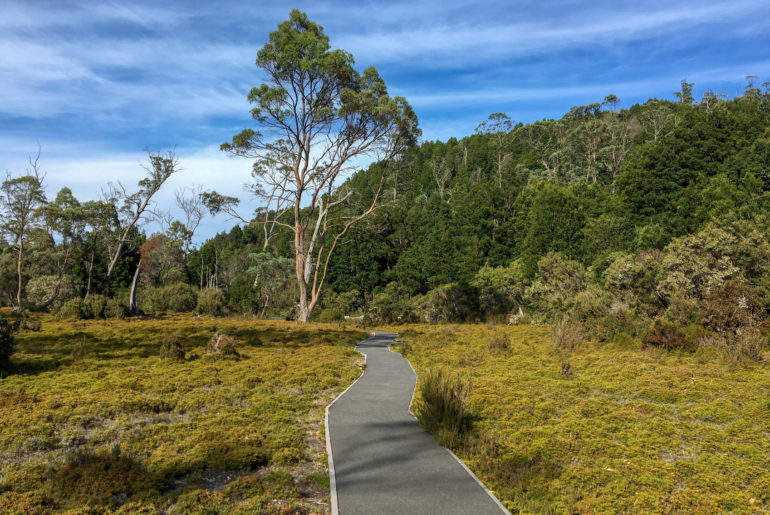
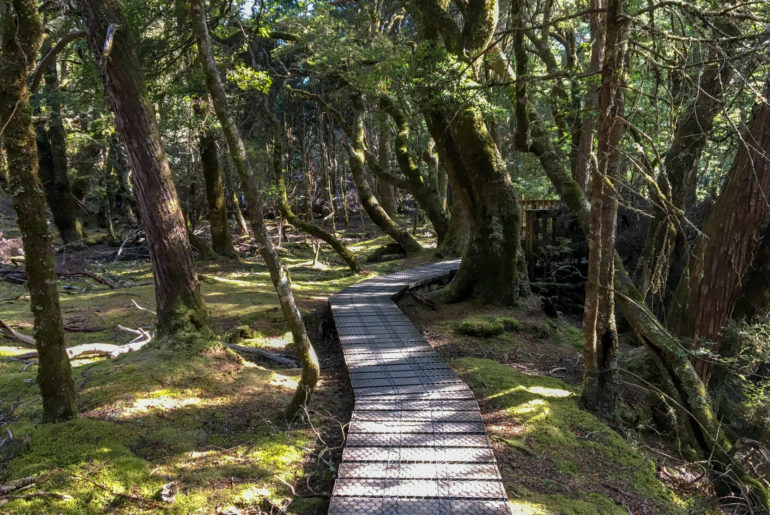


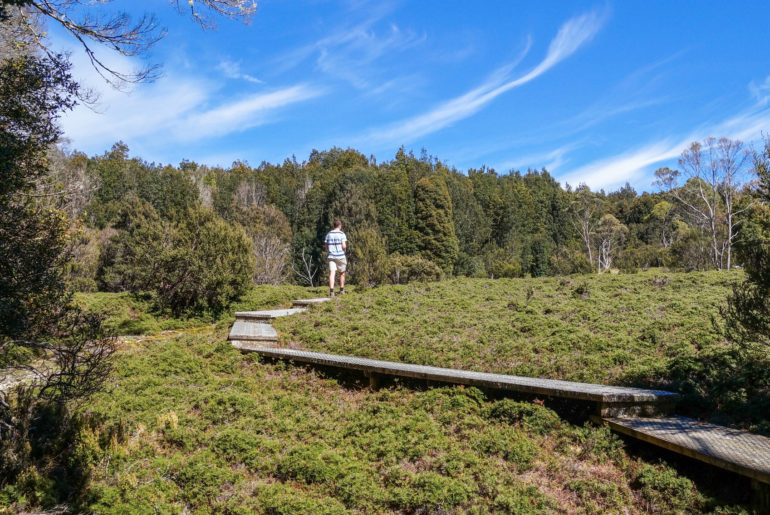

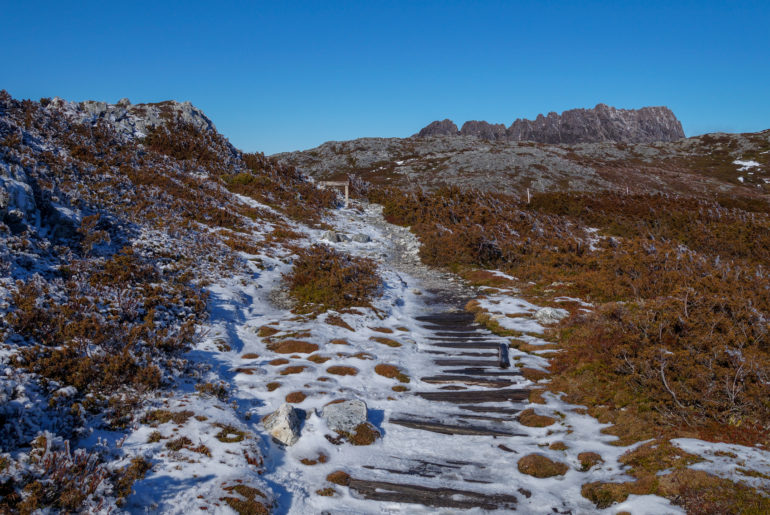
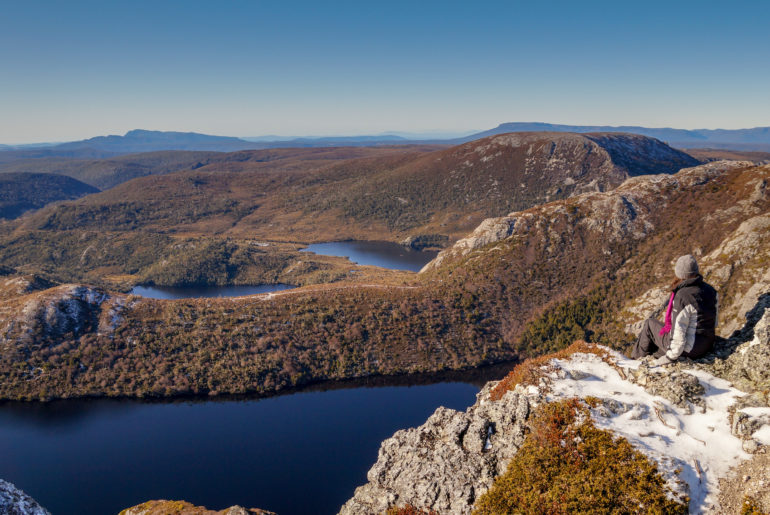
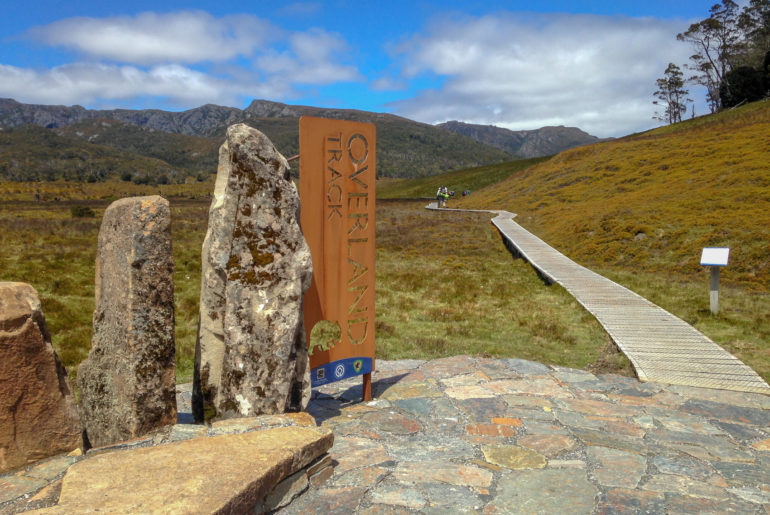



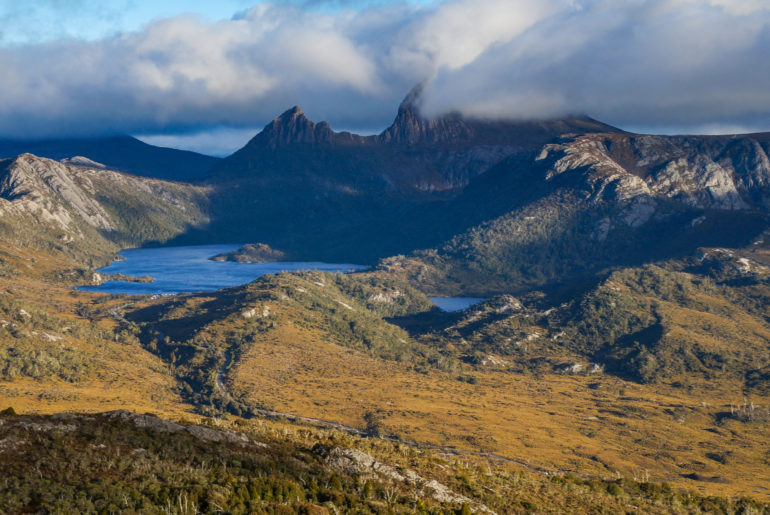
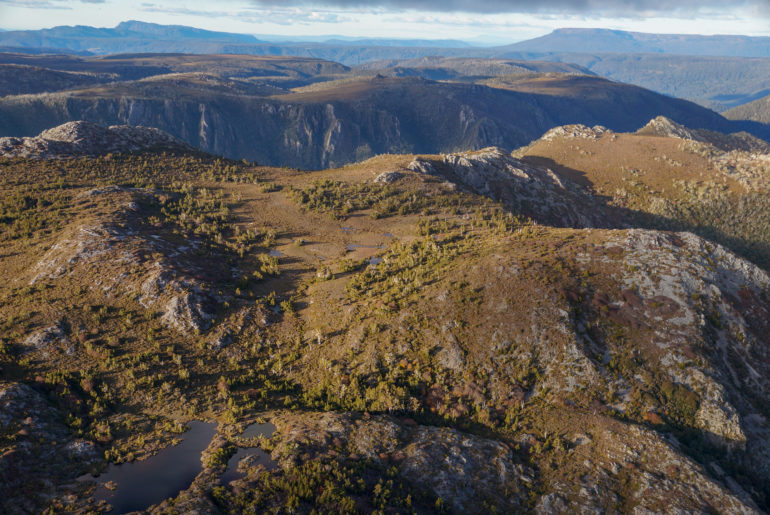
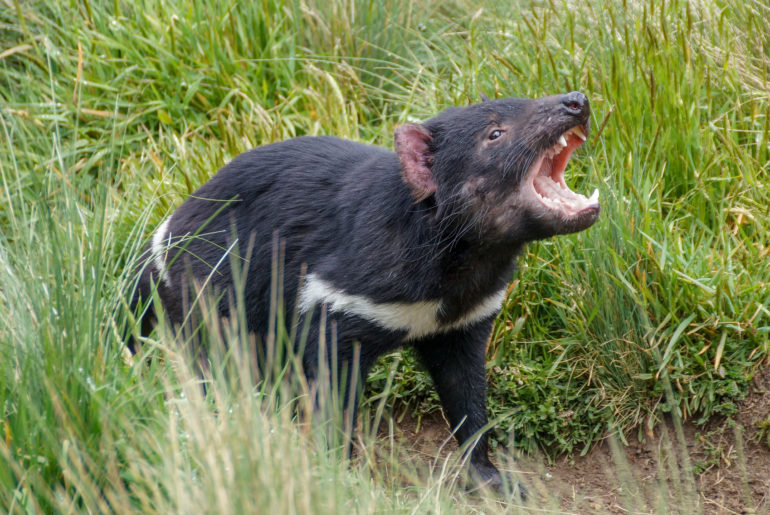
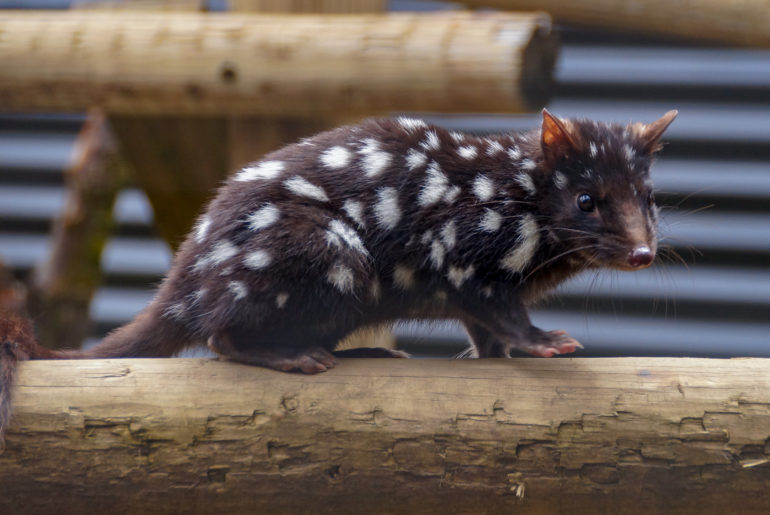



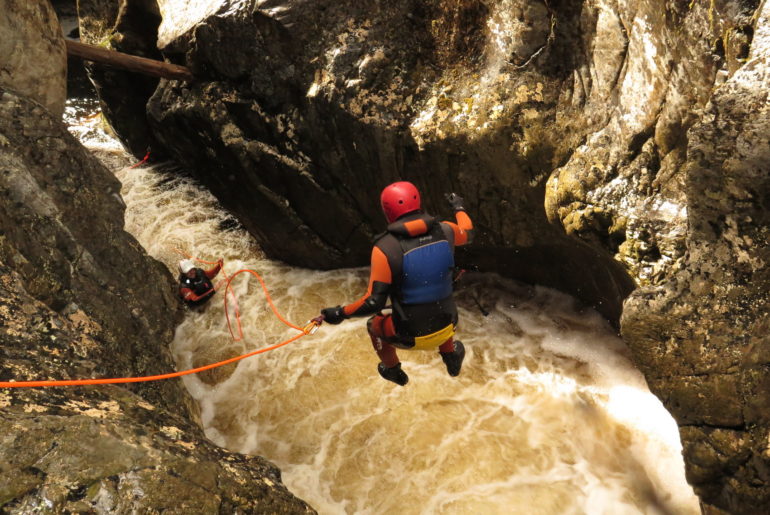
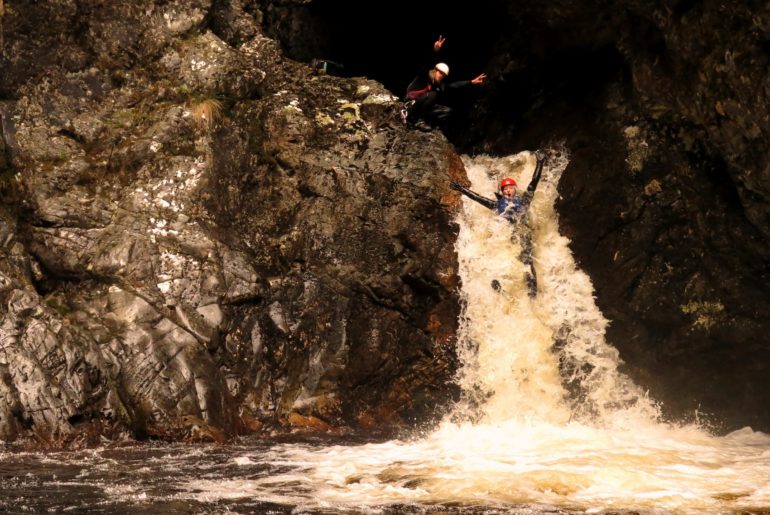
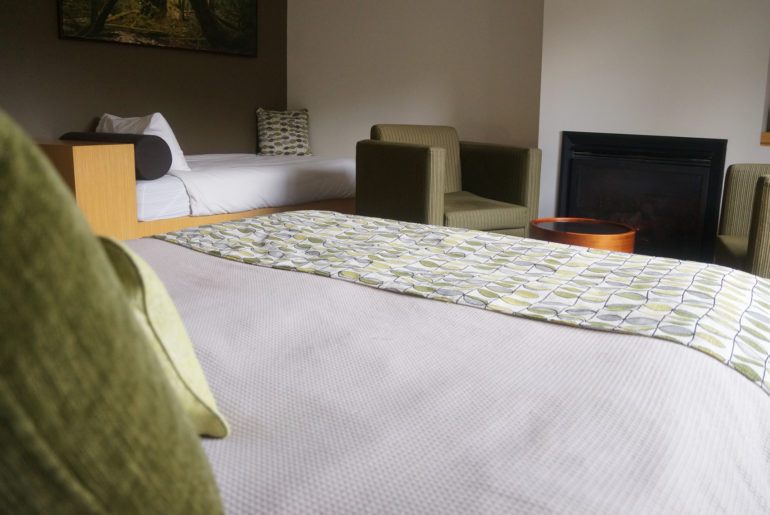
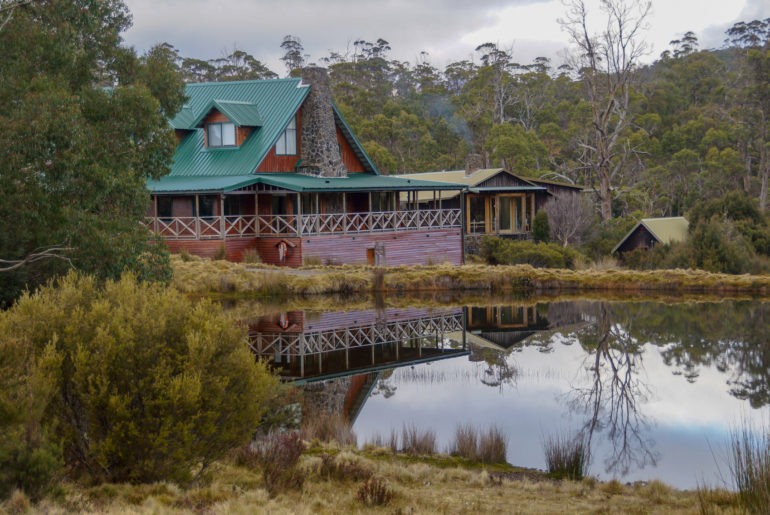
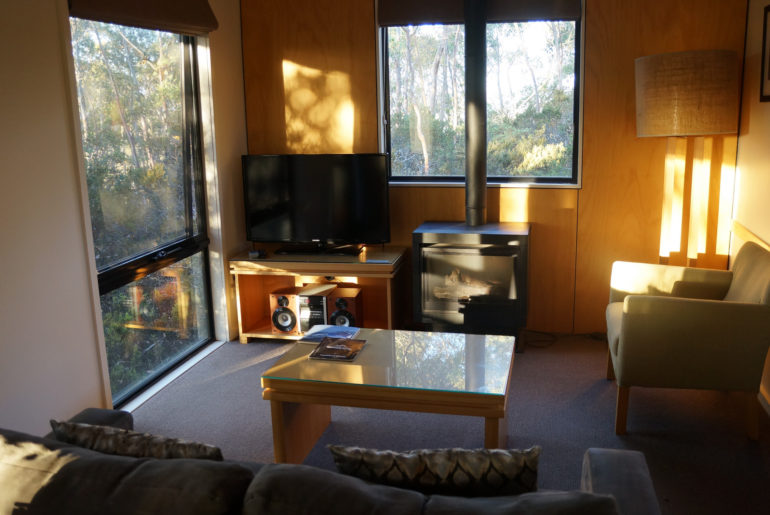

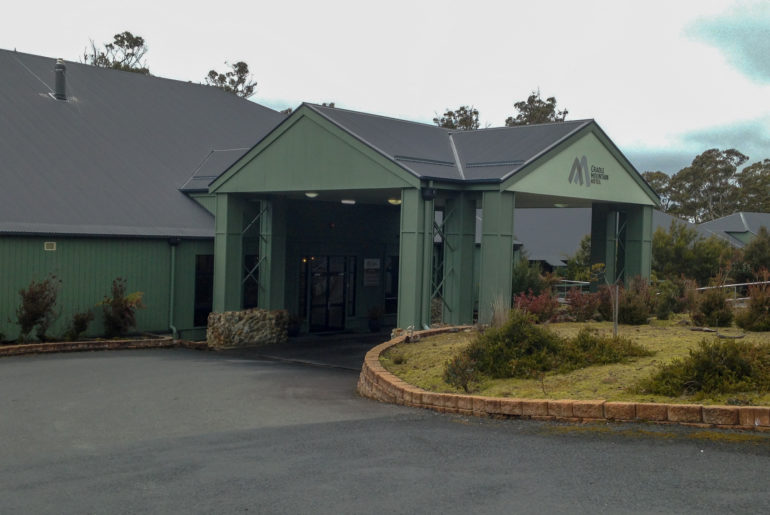
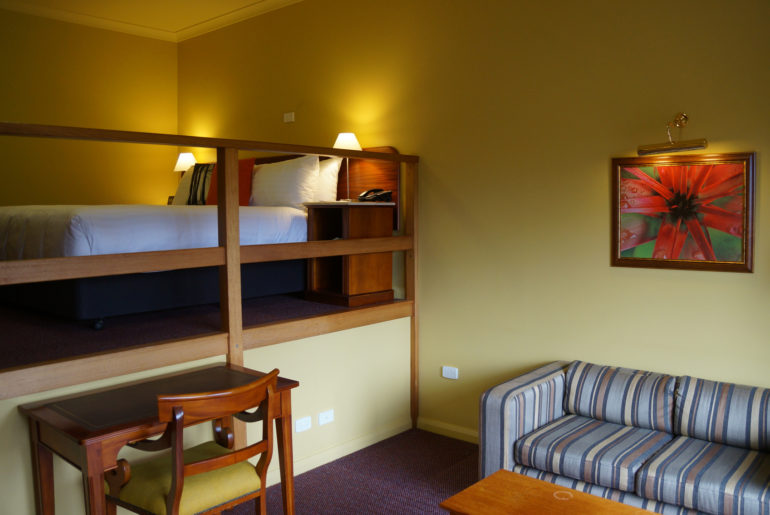
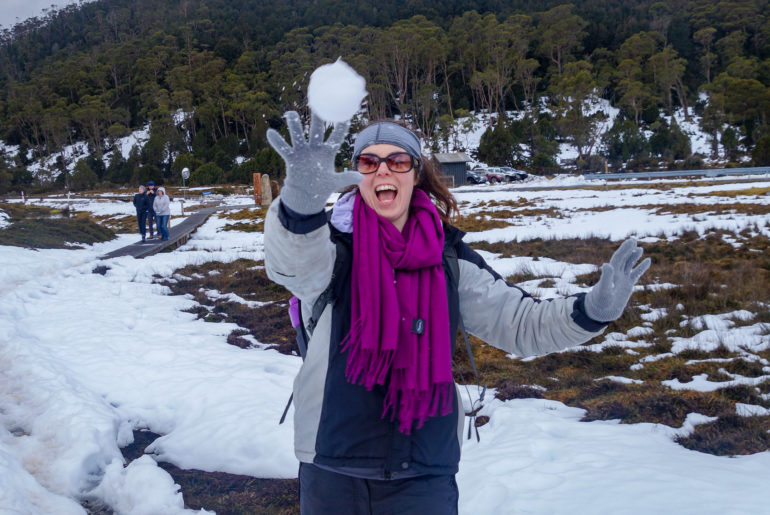
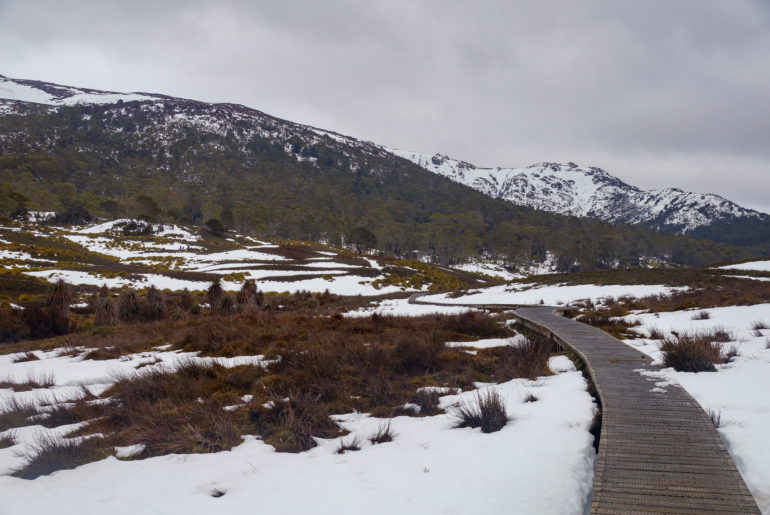



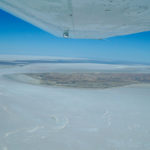
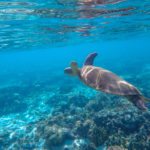
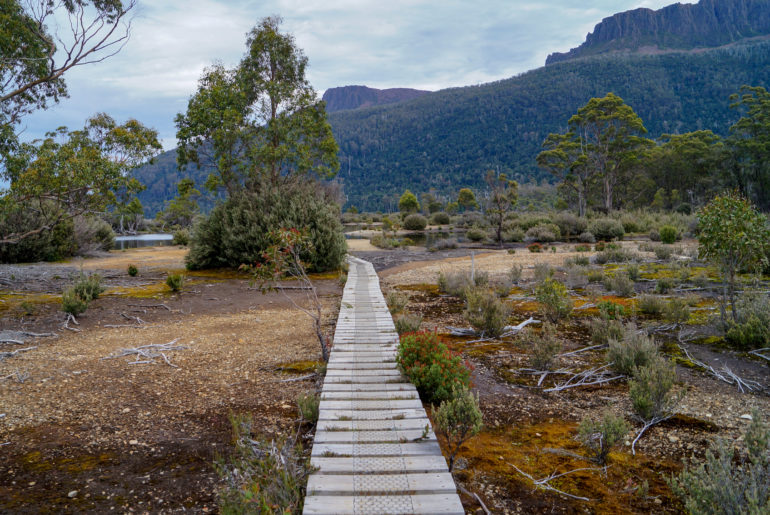
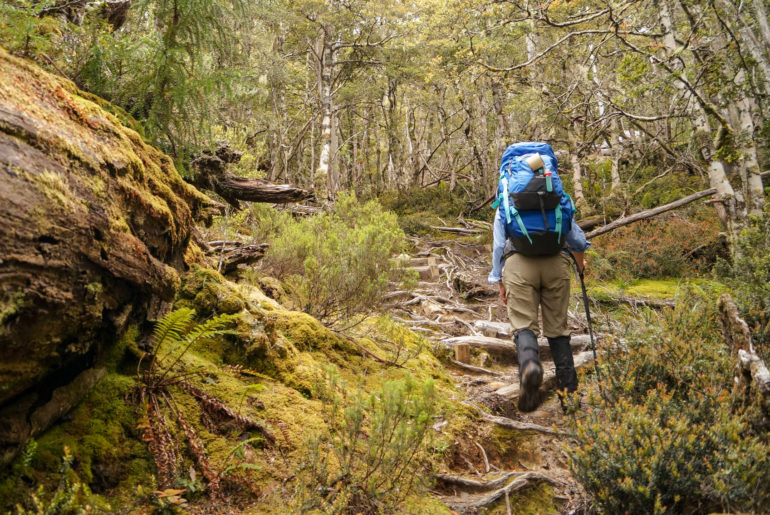
2 Comments
Really nice blog and beautiful pictures would love to visit that places once.
This place looks so enchanting. Maybe I should reconsider my trip to mainland Australia in favour of Tasmania! I hear there are some great wineries there too 🙂